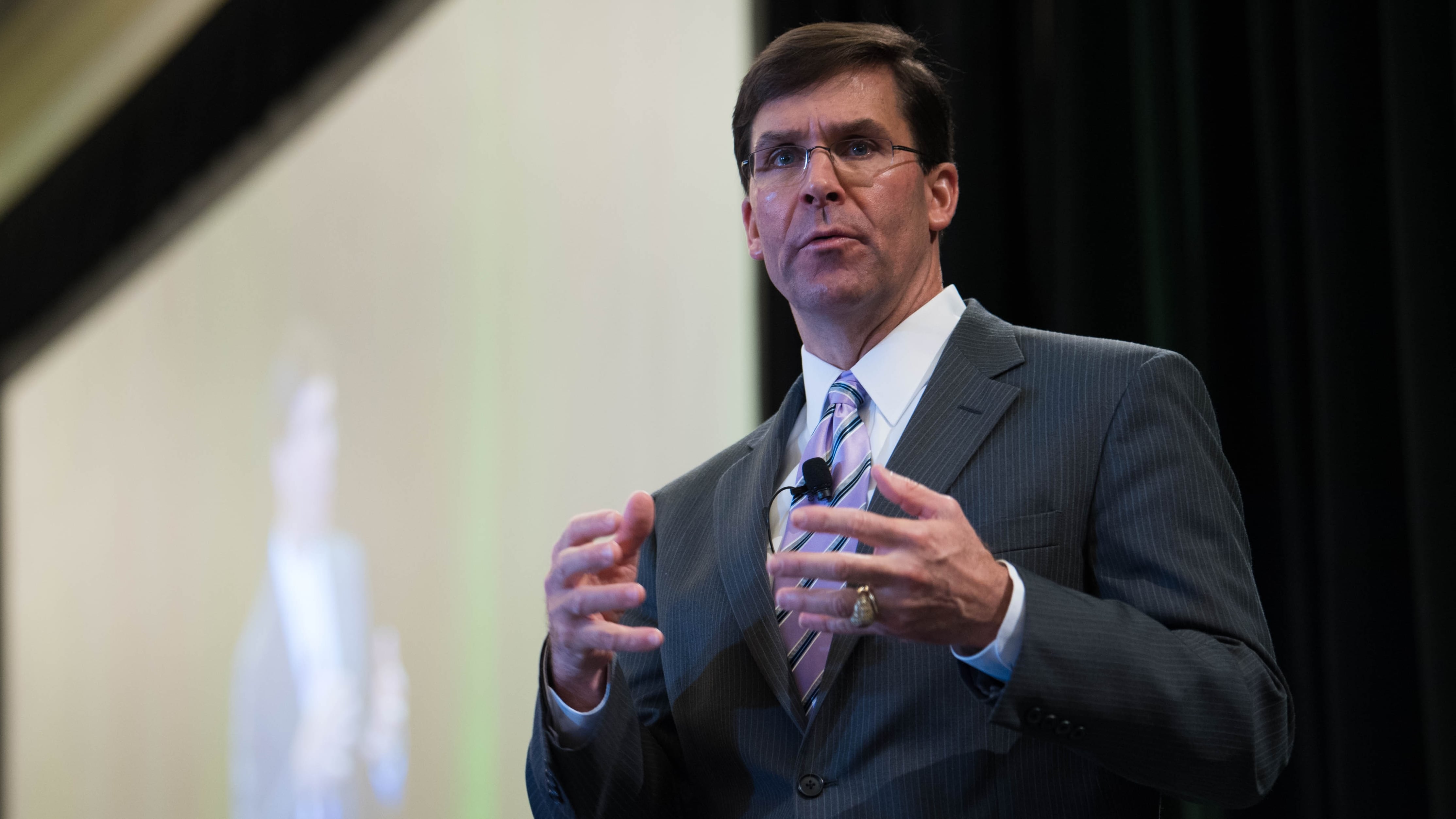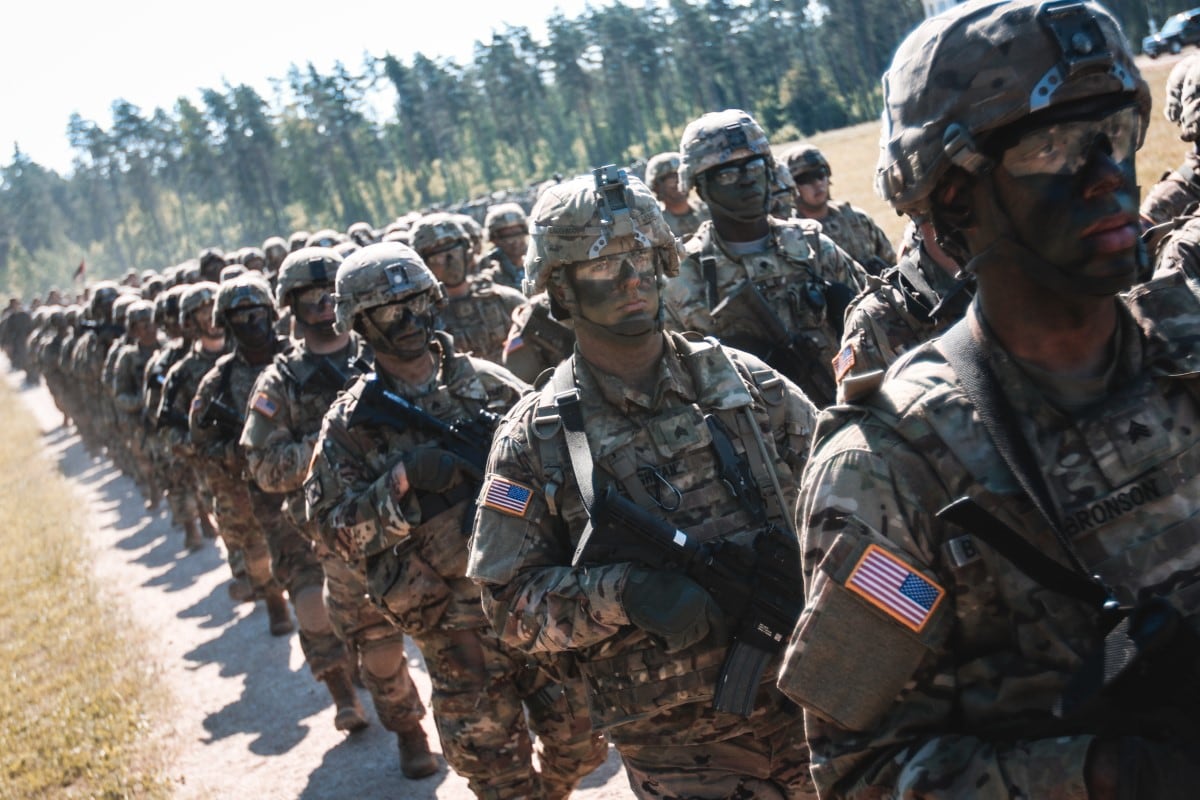Soon after he took office in late 2017, Army Secretary Mark Esper set a goal for the size of the Army: half-a-million active-duty soldiers, with about 500,000 more in the National Guard and Army Reserve.
The road to 500,000 has seen some bumps, most noticeably after the Army’s end strength posted a net-zero gain in 2018. But leaders are confident they’ll meet that goal, Esper told Army Times on Tuesday, and there’s a possibility that they could go even higher.
“I can’t tell you what the Army end strength will be. I know it has to be above 500,000. I know it has to be above 500,000 in the regular Army – and I’ve always said associated growth in the Guard and Reserve,” he said. “But our war games could come out and tell us – in two years, or a year and a half – that we really need 504,000. Or it could come out and tell us that we need 540,000.”

His Army Vision statement proposed that end strength for the force in 2028, but in interviews, testimony and budget documents, the growth plan included 483,500 at the start of 2019, then another 4,000 added each year until 500,000, around the end of 2022.
The Army reported a setback at the end of fiscal year 2018: They had missed their recruiting goal ― their most Herculean effort in a decade ― by 6,500, and another thousand soldiers lost to discharges meant the service was ending the year where it finished, at about 476,000.
In October, officials with Training and Doctrine Command announced a host of initiatives aimed at pulling the Army’s recruiting enterprise out of its “Industrial Era” model, with social media campaigns, new commercials, even competitive CrossFit and e-gaming teams to promote service.
“It’s not going to be an easy mission,” Lt. Gen. Thomas Seamands, the Army’s deputy chief of staff for personnel, told Army Times in September, back when the service was staring down the possibility of having to add 11,500 to the force in 2019. “We’ve got recruiters all across the country and overseas who we’re asking to do some really heavy lifting. We think we’ve given them the right tools to be successful.”
But by March, with the release of their budget proposal, things had ramped down a bit. The Army is now shooting to grow by 2,000 soldiers a year for the foreseeable future.
Holes in the force
The first priority of a bigger Army is filling existing holes in formations, Army Chief of Staff Gen. Mark Milley told Army Times in September, before looking to create new commands.
The goal is not just 100-percent manning, he said, but 105 percent, to create a cushion for soldiers who aren’t able to deploy for any number of reasons.
“We’re increasing combat readiness by filling our operational units to 100 percent of authorized strength this year, in 2019, and 105 percent by the end of 2020,” he told an audience at an Association of the United States Army event in January.
Filling the gaps
With the announcement of the new, more conservative growth plan, leaders offered that there would be some internal shifts to fill holes in formations, notably by doing away with some headquarters staff jobs and Defense Health Agency positions and sending those personnel to operational units instead.
The plan has been going on for about the past year, Esper said, but does not involve plucking soldiers from one place and plopping them in a new one. It’s happening by attrition, eliminating those positions as their currently assigned personnel rotate out, and sending what would have been their replacements to other units.
“I would say it’s been in the hundreds, and a good chunk of them have gone to Futures Command,” Esper said, offering the headquarters jobs as a specific example.
Many of those come from major commands, he added, or so-called initiatives groups assigned to general officers.
“And we’re getting rid of all of those, is what the plan is,” he said, and maybe sending those two or three soldiers from each group to commands like the National Training Center, Joint Readiness Training Center or security force assistance brigades.
RELATED

“We want to get there through a number of things,” he said of the manning goal. “This is one – probably a smaller part.”
A Government Accountability Office study released in March pegged the delay in reaching the 500,000 goal from 2022 to 2025. But Esper would not say whether that shift will prevent the Army from reaching 105-percent manning by the end of next year.
“I haven’t ruled out, either, that once we get all the changes made to TRADOC and to recruiting," he said, that there will be a more promising outlook.
The slow-down in growth has given the Army a bit of breathing room to make changes, assess their effectiveness and adjust the way ahead over the next few years.
“If we take a look and feel confident, we can raise our numbers to 3K a year or 4K a year,” Esper said. “Or if the economy turns south, that’s a great time to ramp up end strength as well.”
Meghann Myers is the Pentagon bureau chief at Military Times. She covers operations, policy, personnel, leadership and other issues affecting service members.





